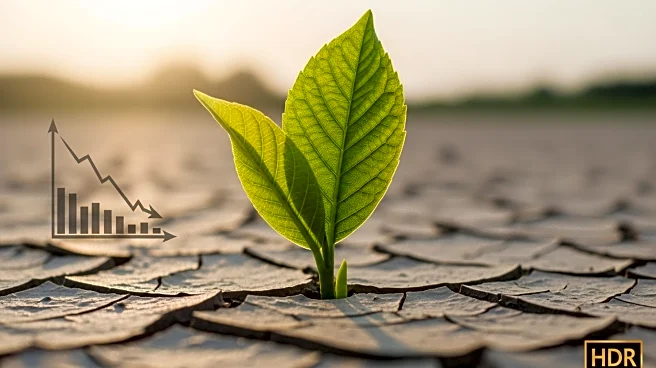What's Happening?
The Australian government has unveiled a $5 billion Net Zero Fund aimed at supporting the decarbonization of heavy industry. This initiative is part of the National Reconstruction Fund, which draws capital from an existing $15 billion program. The announcement coincided with the release of the government's 2035 climate target, which aims for a 62-70% reduction in greenhouse gas emissions compared to 2005 levels. The Net Zero Fund is designed to help large industrial facilities invest in new equipment, technologies, and processes to reduce carbon emissions. It also aims to ensure these facilities are prepared for future production while maintaining employment in regional and outer-suburban areas.
Why It's Important?
The establishment of the Net Zero Fund is a significant step in Australia's efforts to combat climate change and transition to a low-carbon economy. By focusing on heavy industry, the fund targets one of the largest sources of emissions, potentially leading to substantial reductions in national carbon output. This initiative not only supports environmental goals but also aims to preserve jobs, which is crucial for economic stability in affected regions. The fund's impact could extend beyond Australia, setting a precedent for other countries to follow in their decarbonization efforts.
What's Next?
The next steps involve the implementation of the Net Zero Fund, with industrial facilities expected to begin making investments in decarbonization technologies. The government will likely monitor the progress of these investments to ensure they align with the 2035 climate targets. Stakeholders, including industry leaders and environmental groups, may respond to the fund's rollout, potentially influencing its execution and effectiveness. Additionally, the success of this initiative could lead to further policy developments aimed at achieving net zero emissions.
Beyond the Headlines
The Net Zero Fund could have broader implications for Australia's industrial sector, potentially driving innovation and competitiveness in green technologies. As facilities upgrade their equipment and processes, there may be opportunities for advancements in energy efficiency and sustainable practices. This shift could also influence global markets, as Australian industries become leaders in low-carbon production methods.










